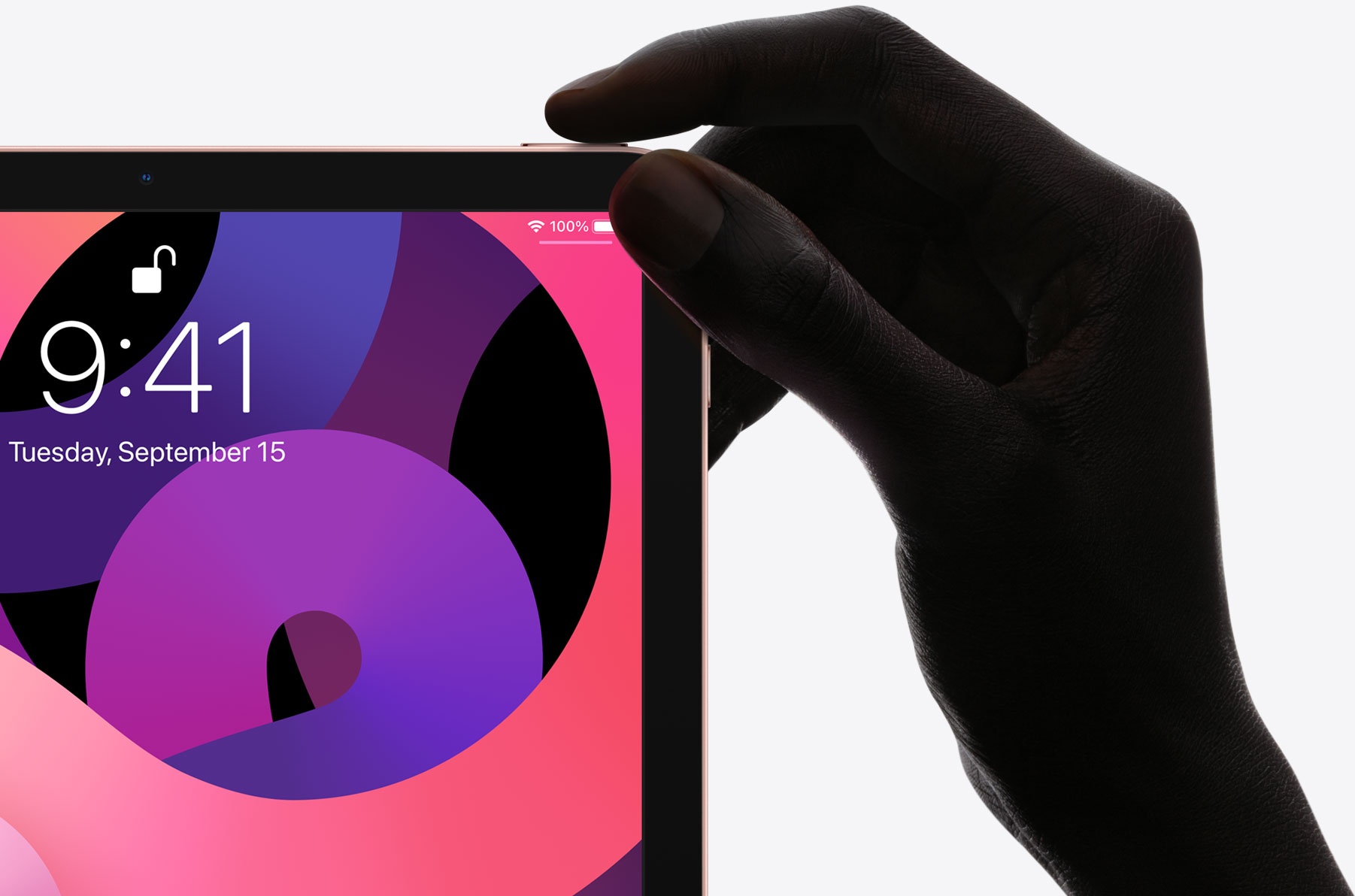
The new iPad Air is Apple’s first device with a re-engineered Touch ID fingerprint sensor, built into the tablet’s Top button. The move has prompted some watchers to point out that a return of Touch ID in the next iPhone would be a welcome one.
Touch ID in the Top button (aka the Power button) of the new iPad Air offers fast, easy and secure authentication. It’s a feat of engineering that has unfortunately gone largely unnoticed in a sea of Apple news following the “Time Flies” event.
→ How to configure and use Touch ID on the Mac
Apple is calling it in the iPad Air 3 press release their “next-generation Touch ID sensor.” While nothing has changed about it in terms of functionality, the new sensor had to be re-engineered to be smaller before it could be integrated into the Top button.
Yeah. But packed pretty full. That Touch ID on the iPad Air power button really got my attention. I’m wondering if we’ll see it on the iPhone 12.
— Dark Mode Dave (@davemark) September 15, 2020
Doing so was necessary to permit Apple’s engineers to put an edge-to-edge display on the iPad Air for the first time. And now, folks are increasingly arguing that it’s also an ideal location for a fingerprint sensor on the ucpoming iPhone 12.
Apple has shifted most of its iPhone line over to Face ID in recent years, offering up a quick way to scan your face and unlock your phone. The only iPhone that doesn’t support Face ID is the iPhone SE, which still needs a large bezel to make room for the Touch ID fingerprint sensor at the bottom of the display.
Face ID was fine, in the before times, but over the past six months I’ve longed for a return to Touch ID. Like many others, I’m wearing a mask every time I leave my house, meaning I always have to enter my PIN code as the mask blocks Face ID from working correctly.
Aside from a fingerprint sensor built into its Power button, the next iPhone could also benefit from a nice feature request put forth earlier today by 9to5Mac’s Ben Lovejoy:
All we’re asking for here is for Apple to extend these auto-unlock capabilities so that if we swipe up on our iPhone or iPad, it checks whether our Watch is on our wrist and unlocked and, if so, unlocks the iOS device too.
It’s normally a safe thing to do because it only unlocks devices that use the same Apple ID, and only when they are within Bluetooth range. There may be a few situations where it wouldn’t be safe, but Apple already allows us to toggle the feature on or off, so that’s no issue.
I fully agree with the sentiment that the timing is perfect for Apple to make the move because having to skip Face ID when wearing a mask is a way bigger annoyance than it seemed at first – even with the ability to instantly skip a facial scan and jump straight to the passcode screen while wearing a mask.